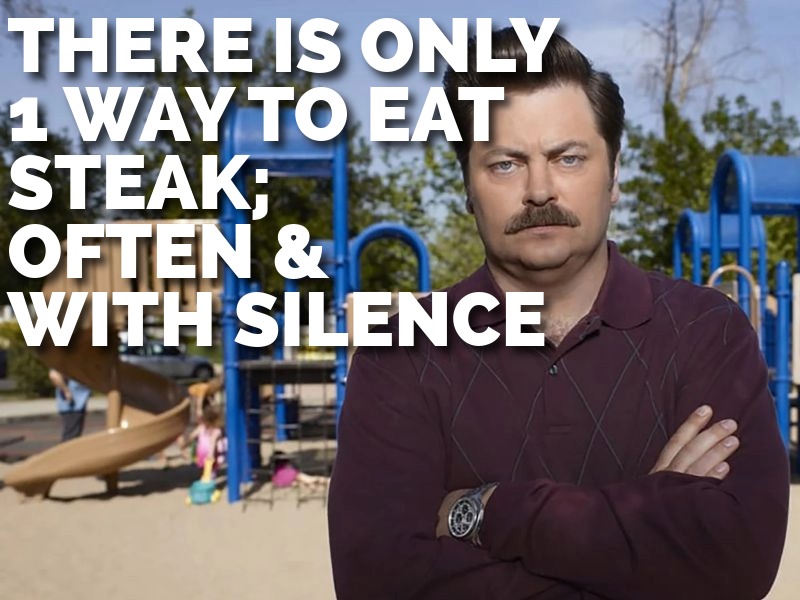The NY Strip steak is one of the most iconic cuts of beef, loved for its balance of tenderness, flavor, and marbling. But cooking it to perfection requires more than just tossing it on the grill. From charcoal and gas grilling to pellet smoking and cast iron searing, there are countless ways to transform this steakhouse favorite into a masterpiece. This guide covers the ultimate methods, step-by-step instructions, flavor tips, and expert strategies so you can create the perfect NY Strip steak at home every single time.
This post contains affiliate links. If you click through and make a purchase, I may earn a small commission at no extra cost to you.
Thank you for supporting The Amore Life!

Why the NY Strip Steak is a Favorite
The New York Strip steak (sometimes called Kansas City Strip or Shell Steak) is cut from the short loin, a muscle that does little work. That makes it tender, while its generous marbling adds incredible flavor. Unlike a filet mignon, which is buttery but mild, or a ribeye, which is intensely marbled, the NY Strip offers the best of both worlds—flavorful, meaty, and hearty with just enough chew to be satisfying.
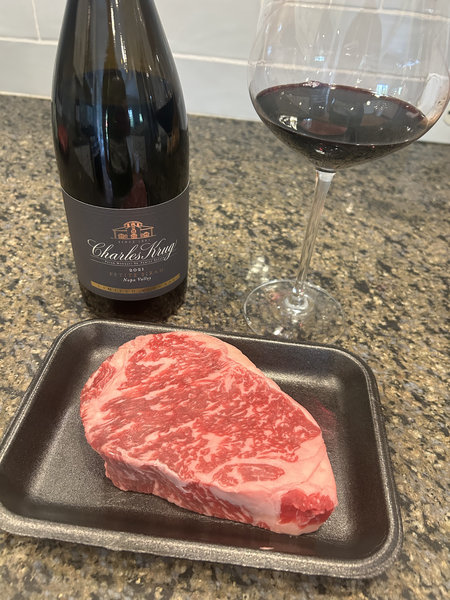
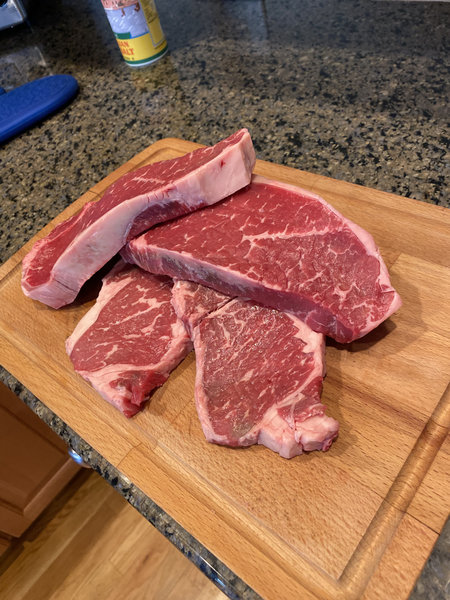
Its thickness (usually 1–1.5 inches) makes it perfect for multiple cooking methods. Whether you’re a purist with a charcoal grill or a precision lover with a sous vide setup, the NY Strip adapts beautifully.
The Foundations of Steak Success
Before diving into the methods, let’s cover the universal truths of great steak.
Preheating is Non-Negotiable
Steak needs high heat for that golden-brown crust known as the Maillard reaction.
- Grills: Preheat 15–20 minutes, lid closed.
- Cast Iron: Heat until oil shimmers.
- Pellet Smokers: Let them stabilize at target temperature.
Seasoning: Simple is Best
- Classic: Kosher salt + cracked black pepper.
- Upgrade: Garlic powder, smoked paprika, or a light coffee rub.
- Luxury: Finish with flaky sea salt right before serving.
Temperature Guide
Always use a digital thermometer.
- Rare: 120–125°F
- Medium Rare: 130–135°F (the sweet spot for strip steak)
- Medium: 140–145°F
- Medium Well: 150–155°F
- Well Done: 160°F+
Resting
Let steaks rest 5–10 minutes after cooking. This redistributes juices and keeps the steak moist.
My Methods to Cook NY Strip Steak
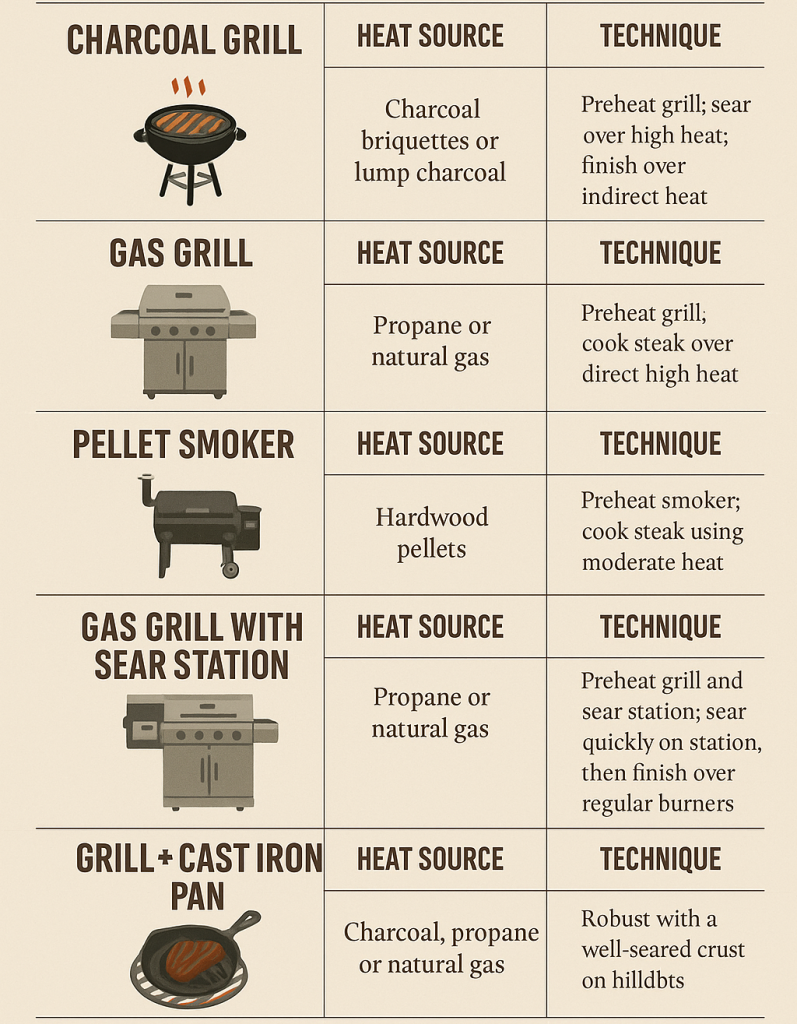
Charcoal Grill
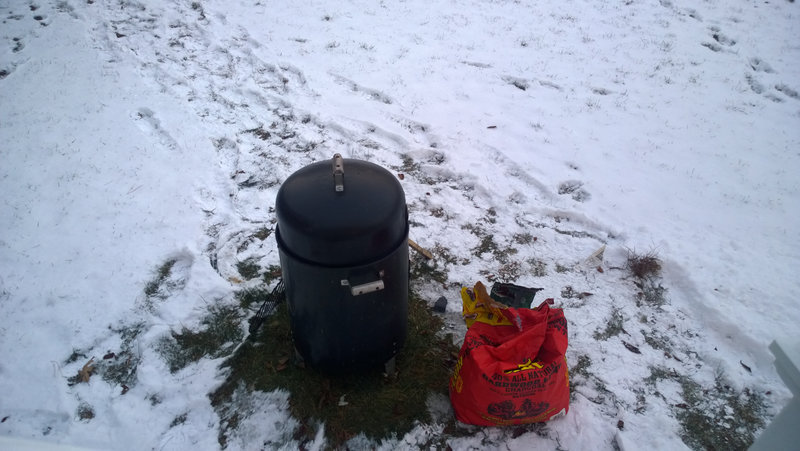
Flavor Profile: Smoky, primal, steakhouse-style.
- Set Up: Two-zone fire (hot side for searing, cooler side for finishing).
- Steps:
- Sear steak 2–3 minutes per side directly over coals.
- Move to indirect heat until desired doneness.
- Tip: Add a chunk of oak or hickory for extra depth.
- Best For: Those who crave bold, smoky flavors and love tending the fire
- Equipment: I have had a few, Char-Broil and Masterbuilt. The Weber Kettle 22 inch is my go-to.
Gas Grill
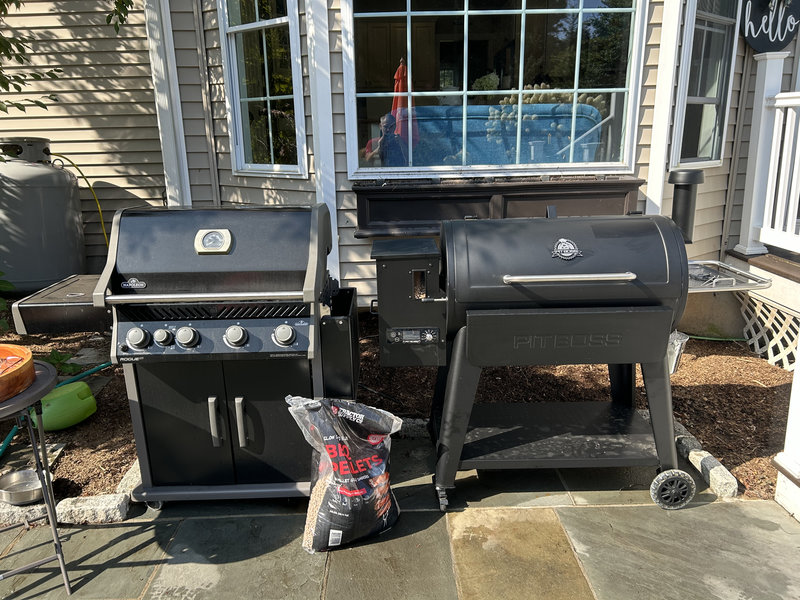
Flavor Profile: Clean, consistent, and quick.
- Set Up: Preheat to 500°F, oil grates well.
- Steps:
- Place steak directly over heat, sear 3–4 minutes per side.
- Lower heat or move to a cooler zone to finish.
- Tip: Use a smoker box with wood chips for extra flavor.
- Best For: Weeknight steak lovers who want great results without fuss.
- Equipment: I love my Napolean PRO 525 with the Sear Station. Expensive but worth it.
Pellet Smoker
Flavor Profile: Gentle smoke, juicy, controlled.
- Set Up: Pick pellets—oak for balance, cherry for sweetness, hickory for boldness. Preheat to 225°F.
- Steps:
- Smoke steak until it reaches ~115°F internal.
- Finish with a hard sear on a cast iron pan or hot grill.
- Tip: This is the ultimate setup for the reverse sear method.
- Best For: Those who value precision and crave subtle wood-smoked beef.
- Equipment: Pit Boss. Love it. Got mine at Tractor Supply end of the season on sale. No brainer.
Gas Grill with Sear Station
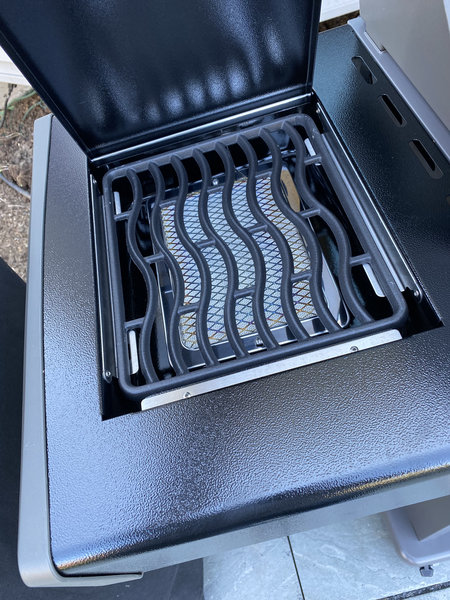
Flavor Profile: Steakhouse char with consistency.
- Set Up: Heat grill to ~400°F, preheat sear burner to 800–1000°F.
- Steps:
- Cook steak indirectly until 15°F shy of target.
- Blast on sear station for 45–60 seconds per side.
- Tip: Perfect if you want that steakhouse crust without overcooking.
- Best For: Owners of modern grills who want the best of both worlds.
Grill with Cast Iron Pan
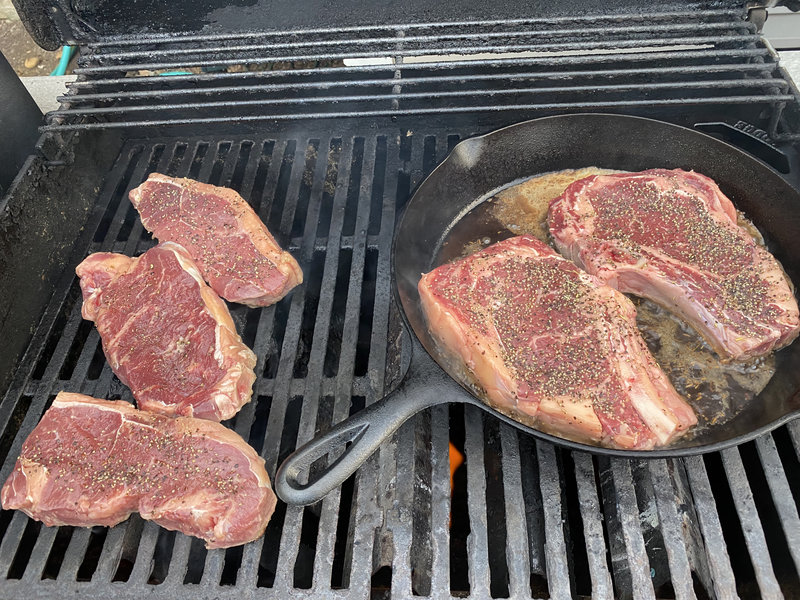
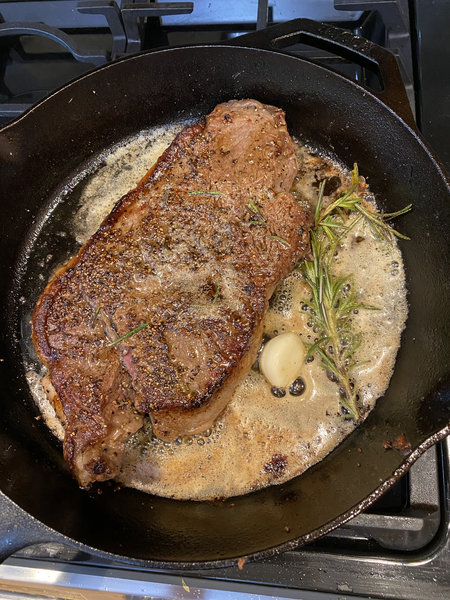
Flavor Profile: Deep crust + subtle grill smoke.
- Set Up: Place cast iron skillet directly on the grill. Heat until smoking hot.
- Steps:
- Add high smoke-point oil (avocado, grapeseed).
- Sear steak 2–3 minutes per side.
- Add butter, garlic, and thyme; baste until done.
- Tip: This technique produces the crispiest crust.
- Best For: Grillers who love pan-basted steak flavor.
- Equipment: A good cast iron pan like this one from Lodge
Additional Steak Techniques
Reverse Sear
Start steak low (oven or smoker at 225°F) until 115°F internal, then finish with a high-heat sear. Perfect for edge-to-edge doneness.
Sous Vide + Sear
Cook sealed steak in a water bath (130°F for medium rare) for 1–2 hours, then sear in cast iron. Virtually foolproof.
Broiler
Underrated but effective. Place steak close to broiler, sear 4 minutes per side. Perfect winter method.
Choosing Flavor Boosts
Compound Butters
- Garlic & Herb
- Blue Cheese & Chive
- Truffle Butter
Basting Aromatics
Butter + rosemary sprigs + garlic cloves = steakhouse flavor at home.
Pellet Flavor Profiles
- Hickory = strong & smoky
- Cherry = mild & sweet
- Mesquite = bold, earthy
- Oak = versatile, balanced
Why the Cooking Method Matters
Cooking steak isn’t just about getting it to temperature—it’s about the experience.
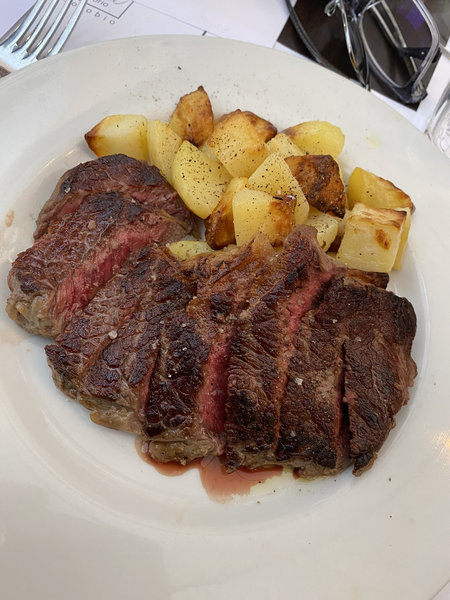
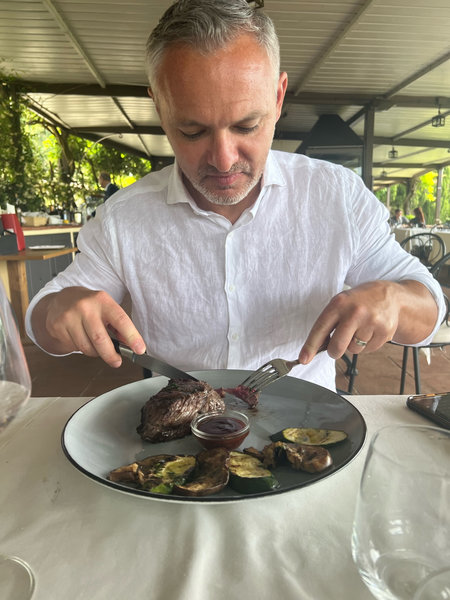
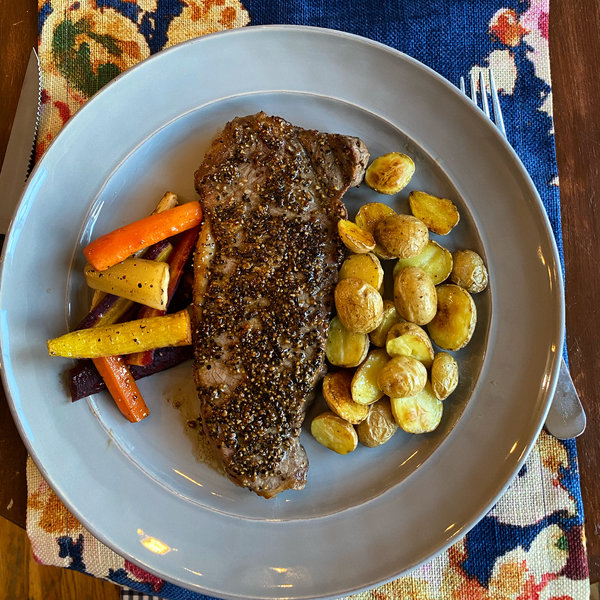
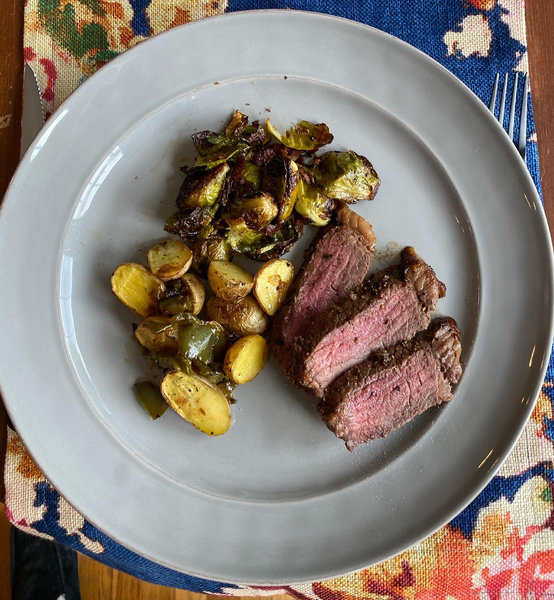
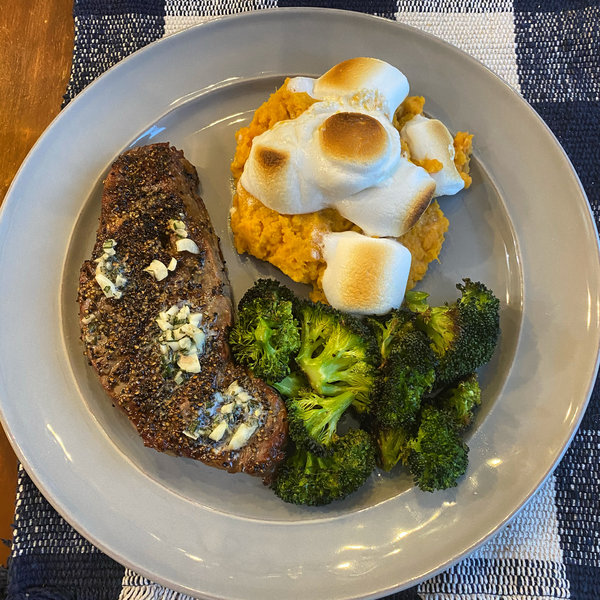
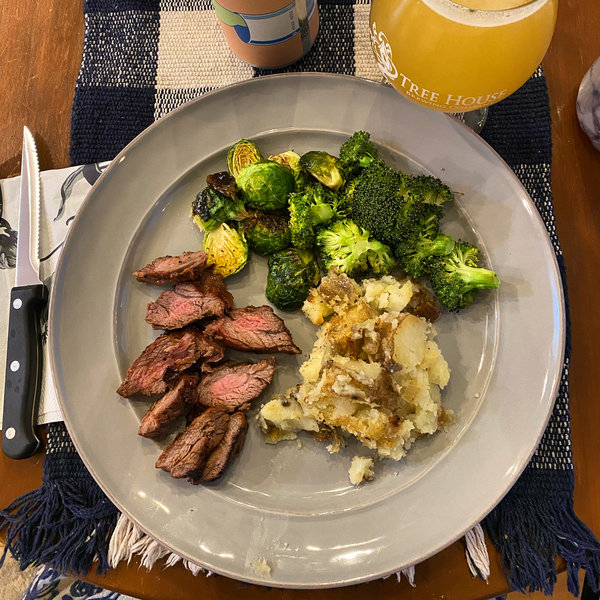
- Charcoal is primal, smoky, and showstopping.
- Gas grilling is efficient and reliable.
- Pellet smoking gives a refined, juicy finish.
- Cast iron is bold and buttery.
- Reverse sear is scientific perfection.
The NY Strip adapts to every one of these, making it the ideal steak for home cooks to experiment with.
